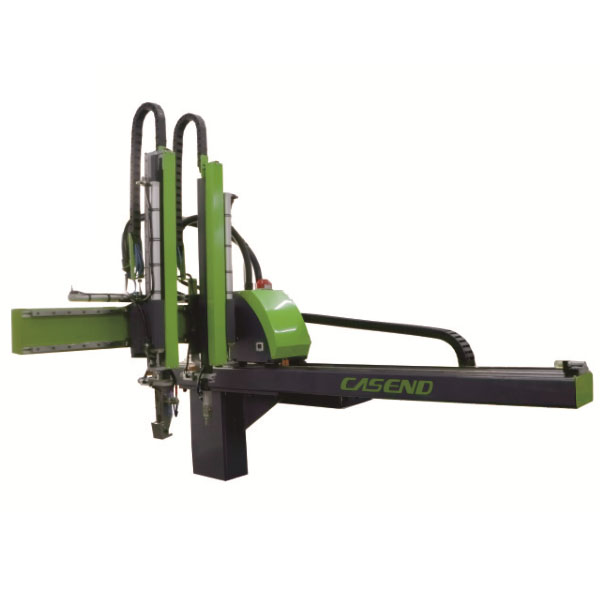Composition and classification of injection molding machine manipulator
1. Hands
The hand is mounted on the front end of the arm. The inner hole of the arm is equipped with a transmission shaft, which can transfer the application to the wrist to roll, stretch the wrist, and open and close the fingers.
The structure of the manipulator hand imitates a human finger, and is divided into three types: no joints, fixed joints and free joints. The number of fingers can be divided into two fingers, three fingers, and four fingers, among which two fingers are the most used. According to the shape and size of the clamping object, it can be equipped with various shapes and sizes of chucks to get used to the needs of the operation. The so-called hands without fingers generally refer to vacuum suction cups or magnetic suction cups.
2. Arm
The function of the arm is to guide the fingers to accurately grasp the workpiece and transport it to the desired position. In order for the manipulator to work correctly, the 3 degrees of freedom of the arm must be accurately positioned.
3. Torso
The torso is a bracket for installing arms, power sources and various actuators.

Classification of injection molding machine manipulators
1. Basic injection manipulator, this type of manipulator generally includes a fixed form procedure and a lesson form procedure according to the production process requirements. The fixed form program covers several standard processes of injection molding, and uses industrial controllers to do simple, regular and repetitive actions. The lesson form procedure is specially adapted for the injection molding machine with special production technology, and achieves the purpose of successful retrieval by ordering and safe arrangement of the fundamental actions.
2. Intelligent injection manipulator. This type of manipulator generally includes functions such as multi-point memory placement, arbitrary point standby, and more degrees of freedom. Generally, servo drive is selected, which can perform complex operations with the maximum limit of human simulation, and can also pass Equipped with advanced sensors, it has visual, tactile and thermal functions, making it a highly intelligent injection robot.